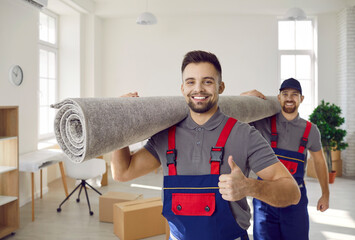A hair salon is where clients get haircuts, highlights, or other styling treatments. It also sells various products to maintain their new look at home.
Choosing the right business location is an important consideration for salons. It should be in a well-populated area that is easy to access. Contact Hairicc now!

Salons provide haircuts, hair coloring, and other beauty treatments to men and women. They usually employ a variety of specialists, including hairdressers, stylists, cosmetologists, shampooers, and receptionists. They also offer a variety of high-end beauty products to their customers. They may charge a flat fee for their services or require a client to pay for the service.
If you want to open a salon, you’ll need to decide on the services you want to offer and determine how much space you need. You’ll also need to choose a payments processor, and consider whether you’re going to handle payroll yourself or use a payroll management software. Then, you’ll need to hire and train your staff. Finally, you’ll need to develop a marketing strategy and create an advertising campaign.
Walk-in salons are often popular among newer stylists who are eager to expand their client base. However, allowing too many walk-in appointments can overwhelm your salon and lead to scheduling chaos. A better way to manage walk-ins is to have your stylists set aside specific hours for new clients. This can help avoid confusion and improve the experience of existing customers.
Some salons offer standalone shampoo services, which are typically referred to as “washes.” These services are offered in addition to a cut or color and can be relaxing and rejuvenating. These services are typically less expensive than full-service treatments and can be a great alternative for people who don’t have time to schedule a full-service appointment.
Hair salons that accept walk-ins may have salaried stylists who work set hours or a group of independent stylists who pay booth rent. If a stylist is busy or unavailable, the salon may ask the client to return at a later time. Some salons have waiting areas for walk-in clients. If the salon doesn’t have a waiting area, clients may be required to wait outside or in another location until a stylist becomes available. Some salons even have a text message notification system for clients to be notified when a stylist is available. This can save a lot of time and frustration.
Appointment-only salons
If you prefer to avoid the hectic rush of walk-in salons, you can opt for appointment-only hair salons. These salons typically focus on providing a calming environment and superior customer service. These salons also offer a variety of luxury services, such as massages and facials. Some of these salons even provide a full beauty suite. However, be aware that these salons will charge a higher price than their walk-in counterparts.
While some salons may offer a wide range of services, others specialize in specific services or techniques. For instance, a hair stylist might be trained in highlighting or balayage, while another may be skilled in haircutting or cutting. Regardless of the salon’s specialty, it is important to find one that provides a service you like.
Located a few blocks from Grand Army Plaza, Toka Salon is a Manhattan-based beauty and hair salon that is highly regarded for its outstanding services and customer experience. The salon is led by John, a stylist with over two decades of international experience. Its bespoke approach to hair, makeup, and nails has earned the salon a loyal following of digital influencers and free-thinkers alike.
In addition to its exceptional customer service, Toka Salon is known for its upscale salon and makeup services, including balayage, highlights, hair color treatments, and precision cuts. The salon is staffed by a team of professional stylists and makeup artists who prioritize client satisfaction. The salon has received rave reviews for its individualized services and warm, welcoming atmosphere.
If you are interested in getting a manicure or pedicure, it is best to make an appointment. This will ensure that you get the technician that you want and reduce the wait time. Also, it is customary to tip your nail technician 15% to 20% of the total cost of the service.
Whether you are looking for a new haircut, a relaxing spa day, or the latest nail trend, New York City has it all. There are numerous salons throughout the city, each offering high-quality services at reasonable prices. Some salons are even renowned for their celebrity clients.
Salons that accept walk-ins
If you’re in need of a quick hair fix, there are several salons that accept walk-ins in New York City. These salons have experienced stylists who can transform your look and make you feel beautiful. They also have reasonable prices. Some even offer discounts on hair extensions and other beauty treatments. These salons are great for first-time customers, impromptu appointments, or wedding preparations.
Located near Calvert Vaux Park on 2825 Cropsey Avenue, iSpa Beauty Salon is a full-service salon that offers treatments and coloring. Its estheticians are skilled at haircutting, styling, and extensions and have extensive knowledge of hair care products. The salon is known for its effective laser hair removal services, professional extensions, and high-quality customer service.
A few blocks away from Madison Square Garden is a hair salon called Roger Markel Salon. The salon is owned and operated by a team of expert stylists who are dedicated to delivering exceptional service and a relaxing experience. Its services include hair cuts, styling, and coloring. Its services are affordable and the salon has a comfortable environment that provides an ideal setting to relax and unwind.
Another popular salon is Lemon Tree Hair Salon in Lake Ronkonkoma. The salon’s staff of stylists is experienced in providing a wide range of services including haircuts, root touch-ups, double colors, and full and partial highlights. The salon also offers straight and digital perms.
The salon also specializes in keratin treatments, which can help your hair look shiny and healthy. Their stylists are well-versed in the latest styles and techniques and will consult with you to ensure that your look is exactly how you want it.
Leslie Ellen Curly Hair Salon NYC is a full-service hair salon that specializes in curly hair. Its owner, Leslie Ellen Abbate, has over two decades of industry experience and is a certified Vidal Sassoon stylist. The salon focuses on the craft of hairdressing and uses only quality products to achieve its results. Its clients praise the salon for its attentive consultations and expert skills in styling and treating curly hair.
Located just a block away from the Empire State Building, THREE DEGREES SALON is a highly-respected salon that provides high-quality hair services. Its stylists are trained to handle all types of hair, and its client base is diverse. The salon also offers a wide variety of salon products, including the Oribe brand.
Salons that accept appointments
Salons that accept appointments are a great choice for those who want to get their hair done in a timely manner. They offer a variety of services, including haircuts and color, and provide a comfortable environment for clients. Many salons also offer a variety of beauty and skincare products. They may also offer refreshments, magazines, and complimentary Wi-Fi. These salons are ideal for people with busy schedules who don’t have the time to wait in a hairdressers’ queue.
When choosing a salon, consider its location. The best location is in a well-populated area that’s easy to reach by car or public transportation. You’ll also need to consider the cost of renting or buying a space for your business. You’ll also need to purchase or rent a range of salon equipment, including chairs, sinks, and hair dryers. It’s important to keep in mind that salon supplies can be expensive, so make sure you budget for them when estimating your start-up costs.
New York City is home to a variety of top-rated salons that specialize in various types of services. For example, Salon V is a highly-rated boutique salon that prioritizes customer satisfaction and offers a wide variety of treatments in a beautiful setting. Its skilled stylists offer a personalized experience and have received high praise from clients for their friendly attitude and excellent skills.
To establish a successful salon, it’s important to understand your target market and differentiate yourself from the competition. You can accomplish this by defining your brand’s unique selling point and creating a niche market that you can dominate. This will not only help you gain a loyal client base, but it will also allow you to discover what works and what doesn’t for your specific business.
In addition, you should create a marketing plan to attract potential customers and increase your brand visibility. You can use various tactics, such as advertising on social media and listing your business in online directories. Lastly, you should develop partnerships with distributors to buy wholesale beauty and skincare products for your salon. This will save you money and ensure that your products are of the highest quality.








